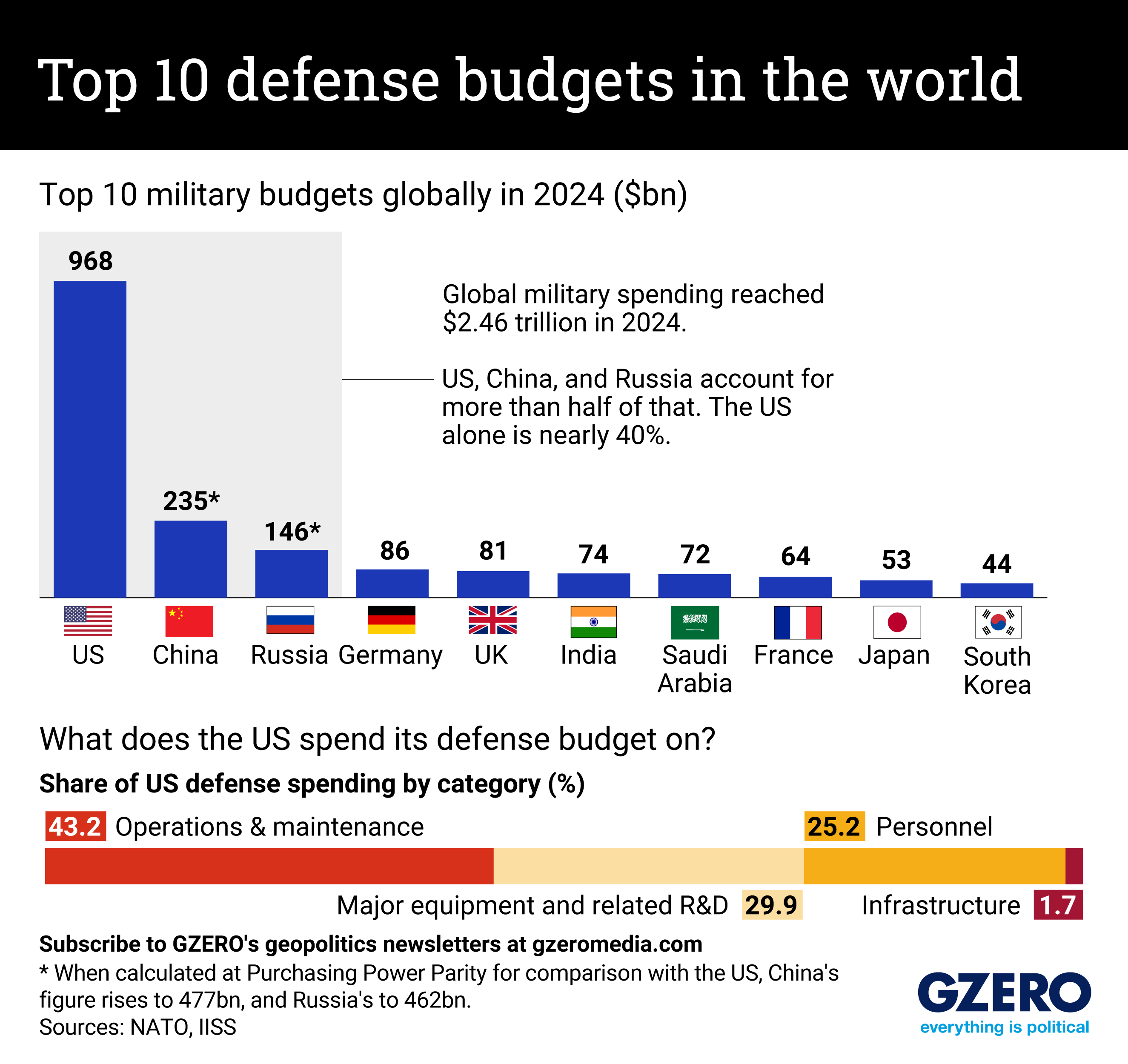February 17, 2025
Last week, US President Donald Trumpsaid he would soon meet with the leaders of Russia and China to discuss arms control and a proposal to slash all three countries’ military budgets in half. That’s a radical idea that would have a significant impact on all three economies and on global security more broadly – after all, the US, Russia, and China combined account for about half of all global defense spending, with the US alone clocking 40%.Russia’s military spending has soared in recent years – growing more than 40% in 2024 alone – due to the war in Ukraine, and China’s has been rising as well as Beijing muscles up in Asia and beyond. Globally, military spending last year reached a new high of $2.46 trillion, according to the International Institute for Strategic Studies. Here’s a look at the top military spenders in the world, and a breakdown of what, in particular, the Pentagon spends its money on.
More For You
- YouTube
While Gaza and Ukraine dominate headlines, dozens of other conflicts—from Haiti to Myanmar to the Congo—get far less global attention. International Crisis Group’s Comfort Ero joins Ian Bremmer on GZERO World.
Most Popular
US President Donald Trump arrives to announce reciprocal tariffs against US trading partners in the Rose Garden of the White House in Washington, DC, USA, on April 2, 2025.
POOL via CNP/INSTARimages.com
From civil conflicts to trade wars to the rise of new technologies, GZERO runs through the stories that have shaped this year in geopolitics.
Ukrainian serviceman walks near apartment buildings damaged by Russian military strike, amid Russia's attack on Ukraine, in the frontline town of Kostiantynivka in Donetsk region, Ukraine December 20, 2025.
Oleg Petrasiuk/Press Service of the 24th King Danylo Separate Mechanized Brigade of the Ukrainian Armed Forces/Handout via REUTERS
Ukrainian intelligence services assassinated a senior Russian general on the streets of Moscow on Monday, detonating a bomb strapped to his car.
French President Emmanuel Macron arrives at the July 14, 2025 military parade on the Champs-Elysees in Paris. - 14/07/2025 - France / Ile-de-France (region) / Paris
Julien Mattia / Le Pictorium.
1: French President Emmanuel Macron announced plans to build France’s first aircraft carrier in decades, as Europe accelerates rearmament.
© 2025 GZERO Media. All Rights Reserved | A Eurasia Group media company.
